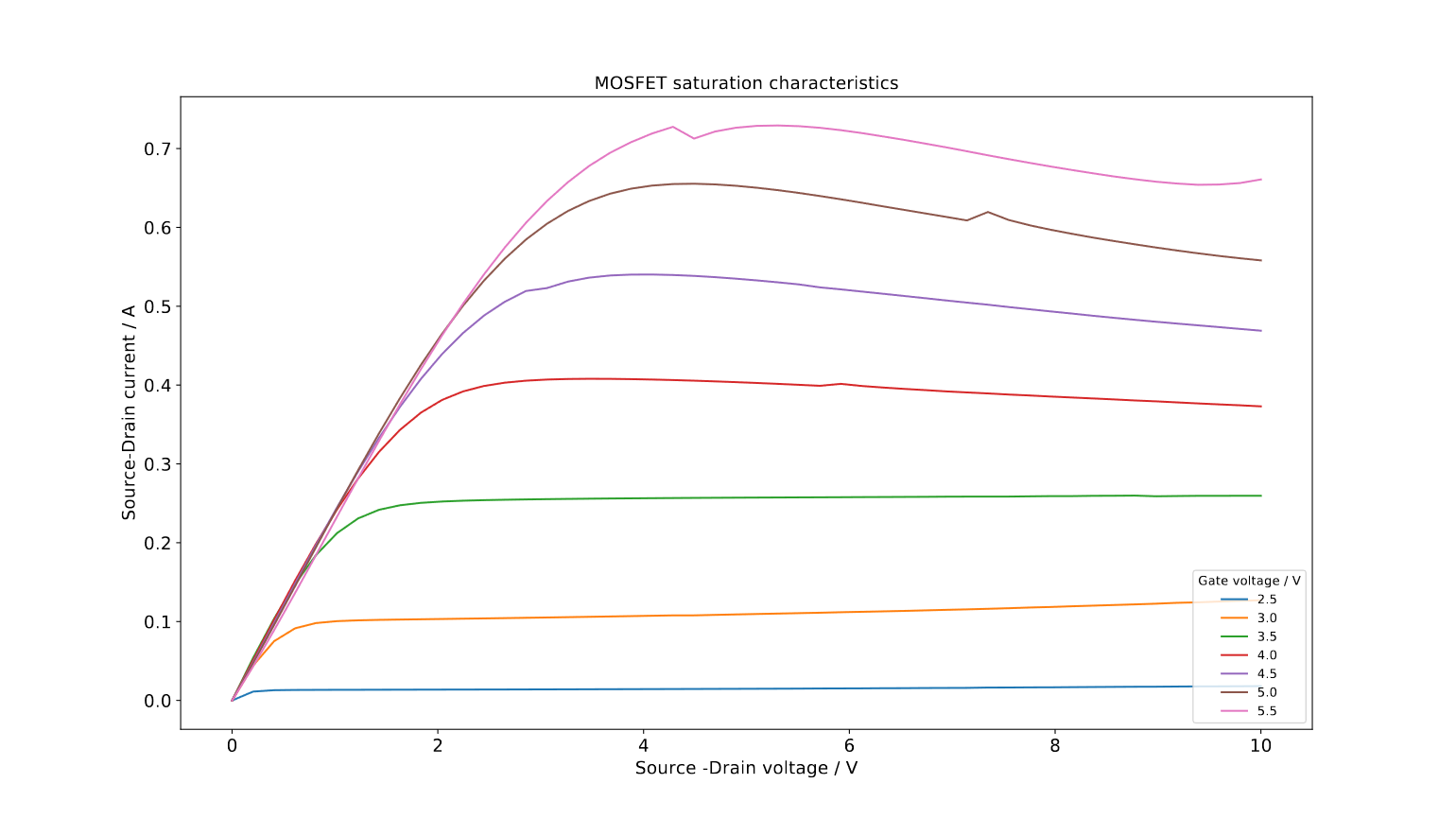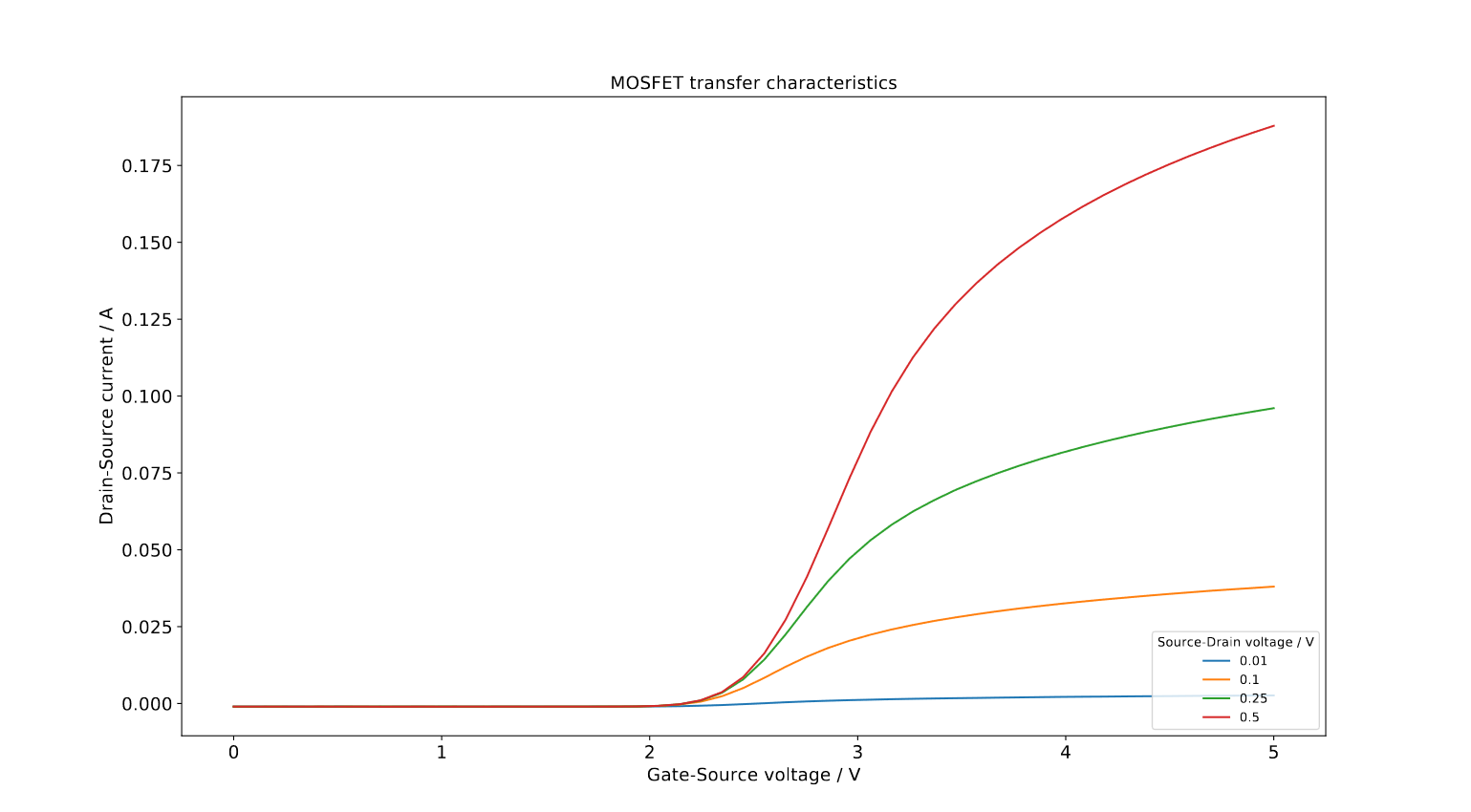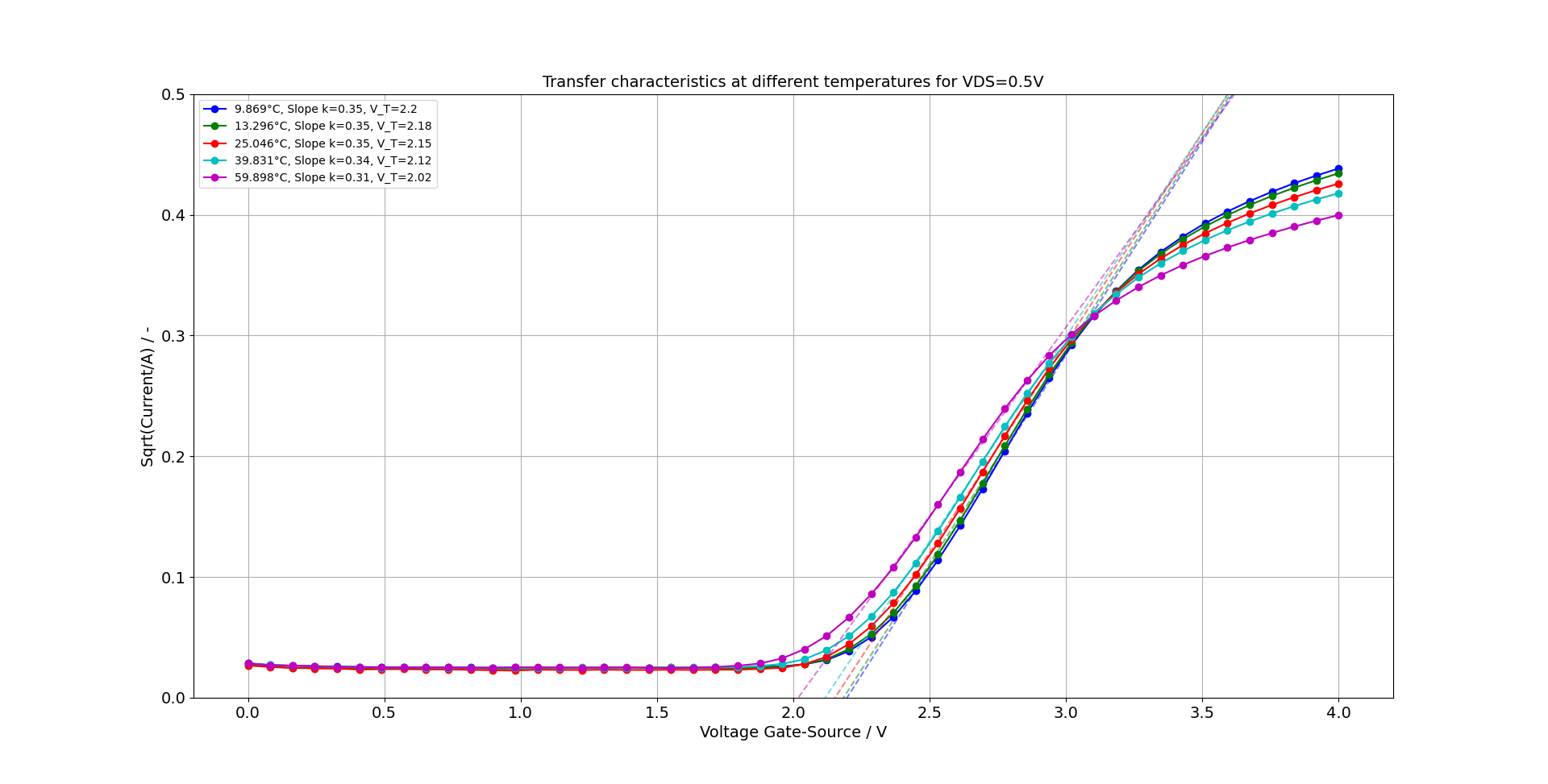1. Introduction
2. Measurement Setup
The Measurements were carried out using a Keithley 2600 Series Sourcemeter.
We used the two channels SMU-A (Drain-Source Contact) and SMU-B (Gate-Source Contact)
to power and measure the MOSFETs saturation and transfer characteristics.
Figure 1: Measurement Setup
In order to produce different temperature environments a Vötsch VT4002 climate chamber was used.
3. Measurements
3.1 Saturation characteristics
The saturation characteristics for different Gate-Source Voltages are shown in Figure 2. The python code used to produce them is shown below.

Figure 2: Output/Saturation Characteristics
[MOSFET_Ambient_saturation.npy]
Source-Drain current plottet against the Source-Drain voltage for different Gate-voltages.
The output curves shown in Figure 1 should follow the output behavior as described by the gradual channel equations:
Equation (1) describes the so called ohmic regime, Equation (2) the saturation regime.
The constant K depends on the channel geometry as well as the oxide capacitance
Important Note on the Python code:
Measuring and recording both channels of the source-meter to avoid this error in the future.
3.2 Transfer characteristics

Figure 3: Transfer Characteristics
[MOSFET_Ambient_transfer.npy]
Source-Drain current plottet against the Gate-Source voltage for different Drain-voltages.
3.3 Temperature dependent measurements
